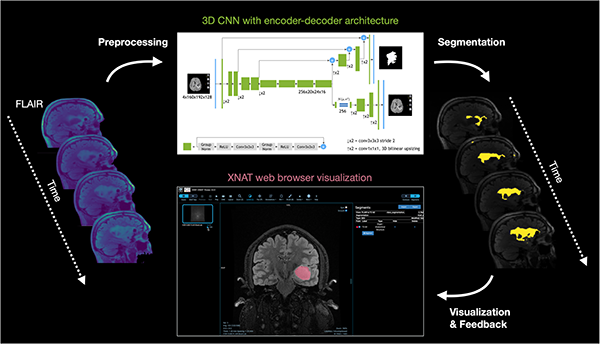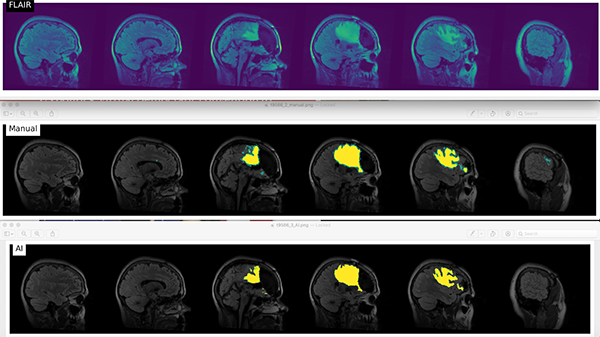T32 Radiology Fellows Share Their Experiences: Kirti Magudia, MD, PhD and Tyler Gleason, MD
2. What was your primary T32 research project?
KM: My project was to develop and validate deep learning tools to predict clinically significant prostate cancer from prostate MRI using a variety of imaging inputs − prostate MRI sequences (T2WI, ADC, DWI) and PSMA PET − as well as pathology ground truths − MR/ultrasound (US) combined fusion biopsy, systematic biopsy and whole mount prostatectomy.
TG: My primary research project involves the use of artificial intelligence (AI) derived segmentation algorithms to detect changes in low-grade glioma tumor volumes over time.


3. How do you think the T32 program benefitted your career in academic radiology?
KM: The dedicated time that the T32 program offered me along with the mentorship of UCSF Radiology faculty was invaluable.
TG: The T32 program gave me the opportunity to get deeply involved in research projects while still in my residency program and to build relationships with people who work primarily on the research side of the UCSF Radiology department. The dedicated coursework in grant writing and statistics also provided a valuable framework for me to build on as I begin a career in academic radiology.
4. How can your research translate into clinical setting to improve patient care?
KM: The models developed have the potential to reduce the rate of unnecessary prostate biopsies.
TG: Low-grade gliomas are slow growing tumors that generally have favorable outcomes. However, because of their slow growth, it can be difficult to detect changes in tumor volumes by qualitative analysis, which in turn can lead to delay in treatment. By providing accurate volumetric measurements of these tumors, we aim to improve the early detection of changes in tumor volumes, which will hopefully lead to earlier treatment and better clinical outcomes.
5. What are your plans after completing the T32 program?
KM: I am joining the Duke University Department of Radiology Division of Abdominal Imaging as an assistant professor and will be pursuing a career as a clinician scientist in academic radiology.
TG: I am planning to apply for academic radiology jobs that will allow me to pursue my twin passions of research and teaching.
Dr. Gleason, along with current T32 Trainees Milan Manchandia, MD and Evan Calabrese, MD, PhD, will present their year-long projects virtually on June 24 and June 25, 2021. Visit our events page for more information.
